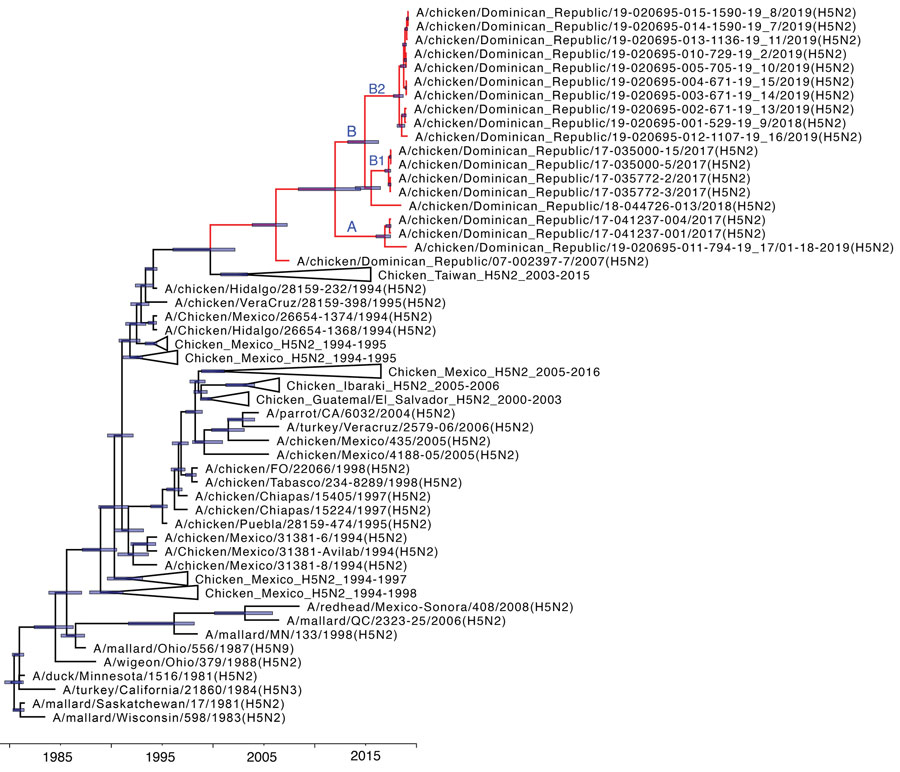Volume 26, Number 12—December 2020
Research Letter
Low Pathogenicity Avian Influenza (H5N2) Viruses, Dominican Republic
Figure

Figure. Relaxed clock molecular phylogenetic tree for hemagglutinin gene of low pathogenicity avian influenza (H5N2) viruses, Dominican Republic. The phylogenetic relationships and temporal evolutionary history have been estimated by molecular clock analysis. Red text indicates the monophyletic Dominican Republic influenza H5N2 viruses. Node bars indicate 95% credibility intervals on node ages. Scale bar shows time in years.
Page created: October 14, 2020
Page updated: November 19, 2020
Page reviewed: November 19, 2020
The conclusions, findings, and opinions expressed by authors contributing to this journal do not necessarily reflect the official position of the U.S. Department of Health and Human Services, the Public Health Service, the Centers for Disease Control and Prevention, or the authors' affiliated institutions. Use of trade names is for identification only and does not imply endorsement by any of the groups named above.